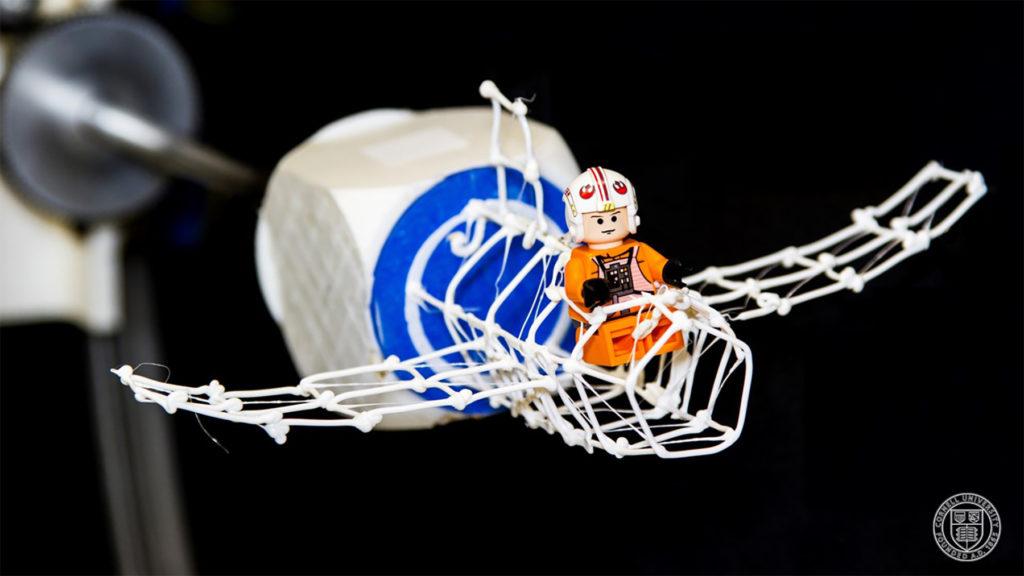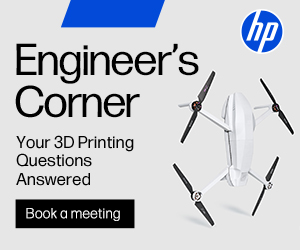On-the-Fly System from Cornell Puts the 3D Print Preview in Your Hand
 Despite the seemingly infinite amount of delight 3D printing already offers to the creative world, the technology and accompanying features just keep getting better and better. And there are a number of designers and engineers out there who are going to be euphoric with the ambition of putting a new 3D printing technique to use soon, thanks to researchers at Cornell University.
Despite the seemingly infinite amount of delight 3D printing already offers to the creative world, the technology and accompanying features just keep getting better and better. And there are a number of designers and engineers out there who are going to be euphoric with the ambition of putting a new 3D printing technique to use soon, thanks to researchers at Cornell University.
Most will agree that this new technology is a thing of veritable magic. The 3D printer gains us privileged entry into a realm filled with new and creative options and allows us to make actual, functional objects right from the desktop. All we have to do is close our eyes and think. From there, a concept is born, or later an appropriate design downloaded, and then sent off to print—soon materializing before our very eyes.
But, gulp, what happens when this process is already in motion and you realize you need to make a change? While you can always abort the mission, that means wasted time and sometimes a lot of valuable filament gone down the tubes too. How is it in such a technological heyday that we can’t fix something or at least check on it in process? That’s exactly what Cornell researchers were asking themselves as they set off to work on developing a new 3D printing technique and discussing it in ‘On-the-Fly Print: Incremental Printing While Modeling,’ accompanied by a video:
Created by Huaishu Peng, Rundong Wu, Steve Marschner, and François V. Guimbretière, the information was presented at the 2016 ACM Conference for Human Computer Interaction, held from May 7-12 in San Jose. There, the team outlined exactly how their new WirePrint 3D printing system permits one to stop, measure, and make edits if required.
Developed in a collaboration between Guimbretière’s lab and the Hasso Platner Institute in Potsdam, Germany, this new technique allows for the pausing of the system at any point in the process so that the designer can check a model or make the desired changes. It’s really more like a very advanced print preview—in physical form.
“We are going from human-computer interaction to human-machine interaction,” said graduate student Peng.
 Contrasting with the traditional layering method involved with 3D printing, the WirePrint extrudes what looks like ropes of plastic filament—quickly solidifying into a wire frame. This allows for a prototype that doesn’t waste time fabricating the entire solid piece but rather just the shape. Referred to as the ‘On-the-Fly’ system, the technology centers around the use of ‘five degrees of freedom.’ This refers to the use of a nozzle that operates vertically, but with a stage that itself can be rotated during the fabrication process. If a part needs to be added, the stage can be turned on its side—and actually can be turned so that any part of the model could face upward. The system was made by the researchers, inspired by an off-the-shelf delta printer. Their modifications were in lengthening the extruder and enhancing the nozzles with a mist cooling feature, as well as including the retractable cutting blade.
Contrasting with the traditional layering method involved with 3D printing, the WirePrint extrudes what looks like ropes of plastic filament—quickly solidifying into a wire frame. This allows for a prototype that doesn’t waste time fabricating the entire solid piece but rather just the shape. Referred to as the ‘On-the-Fly’ system, the technology centers around the use of ‘five degrees of freedom.’ This refers to the use of a nozzle that operates vertically, but with a stage that itself can be rotated during the fabrication process. If a part needs to be added, the stage can be turned on its side—and actually can be turned so that any part of the model could face upward. The system was made by the researchers, inspired by an off-the-shelf delta printer. Their modifications were in lengthening the extruder and enhancing the nozzles with a mist cooling feature, as well as including the retractable cutting blade.
 The blade is included conveniently in case parts need to be removed or cut out—with a model airplane’s cockpit serving as a great example. The nozzle is long enough to extend far enough for making changes, and a magnetized base is removable, meaning that you can actually remove the model from the printer, check it out, and put it back to then continue printing. Amazing!
The blade is included conveniently in case parts need to be removed or cut out—with a model airplane’s cockpit serving as a great example. The nozzle is long enough to extend far enough for making changes, and a magnetized base is removable, meaning that you can actually remove the model from the printer, check it out, and put it back to then continue printing. Amazing!
The Rhino CAD software plug-in is responsible for the actual design of the model frame, forwarding instructions to the system, and giving the user leeway for pausing and corrections. The system integrates changes to the digital file seamlessly, in essence providing a sketch of the finished model, or a rough draft, which allows the user to keep refining until pleased with the end result.
“With its auto mode, the plugin can convert user’s newly design to machine code, find the most printable angle, do its best to avoid collision, and start print, all without user’s intervention,” stated the researchers.
To make the point further—and in a matter of only ten minutes—the team 3D printed a toy airplane model meant to work in a typical Lego airport set.
“The user mainly focused on the CAD modeling, while the system printing the design in parallel,” stated the research team. “The result of this design process, is not just a physical preview, but a digital design that has already been checked in-situ.”
With this example they were able to show off all of the advantages in using the On-the-Fly system as they could add wings, cut out an area for a cockpit, and all the while the model in progress could be stopped, removed, measured, and put back.
“We believe that this approach has the potential to improve the overall quality of the design process,” said the researchers, in what certainly seems like an understatement, all things considered here.
The software even alerts users when a model is actually unprintable, allowing them to stop progress altogether, or to go ahead with the piece so that they can view it anyway, quickly, in partial form. The parts that were unprintable are highlighted in the software design. Overall, this new technique is allowing the user to have a completely fluid experience in both design and printing, without the panic or disappointment associated with a complete—and flawed—print, left only to go in the wastebasket. Time, effort, and materials are all at a premium in this world and the On-the-Fly system offers an incredibly efficient and streamlined way for the designer to achieve exactly what they want in a design project. Is this a 3D printing system you would enjoy using? Discuss further in the On-the-Fly 3D Printing System forum over at 3DPB.com.
[Source: Cornell University]Subscribe to Our Email Newsletter
Stay up-to-date on all the latest news from the 3D printing industry and receive information and offers from third party vendors.
Print Services
Upload your 3D Models and get them printed quickly and efficiently.
You May Also Like
3D Printing News Briefs, May 3, 2025: Executives, Awards, & a 3D Printing Factory
We’re focusing on additive manufacturing business news today, as both Velo3D and PostProcess Technologies announced changes to their Boards of Directors. Sandvik Metal Powder has a new president, and Klas...
EOS Releases Medical Device Master File for M290 3D Printer
Laser powder bed fusion (LPBF) firm EOS has released a Medical Device Master File that will make it easier for customers to achieve regulatory success. The file will essentially be...
Velo3D Secures $22M Metal 3D Printing Powder Supply Deal with Amaero
Velo3D (OTCMKTS: VLDX) has signed a major new agreement with metal 3D printing powder manufacturer Amaero (ASX: 3DA). The five-year deal is valued at USD $22 million and centers around...
Push Button Metal 3D Printing for $50,000?
In 2021 we wrote an article about “Push Button Metal, the low cost metal 3D printing evolution we are not talking about.” In it, we talked about One Click Metal,...






























